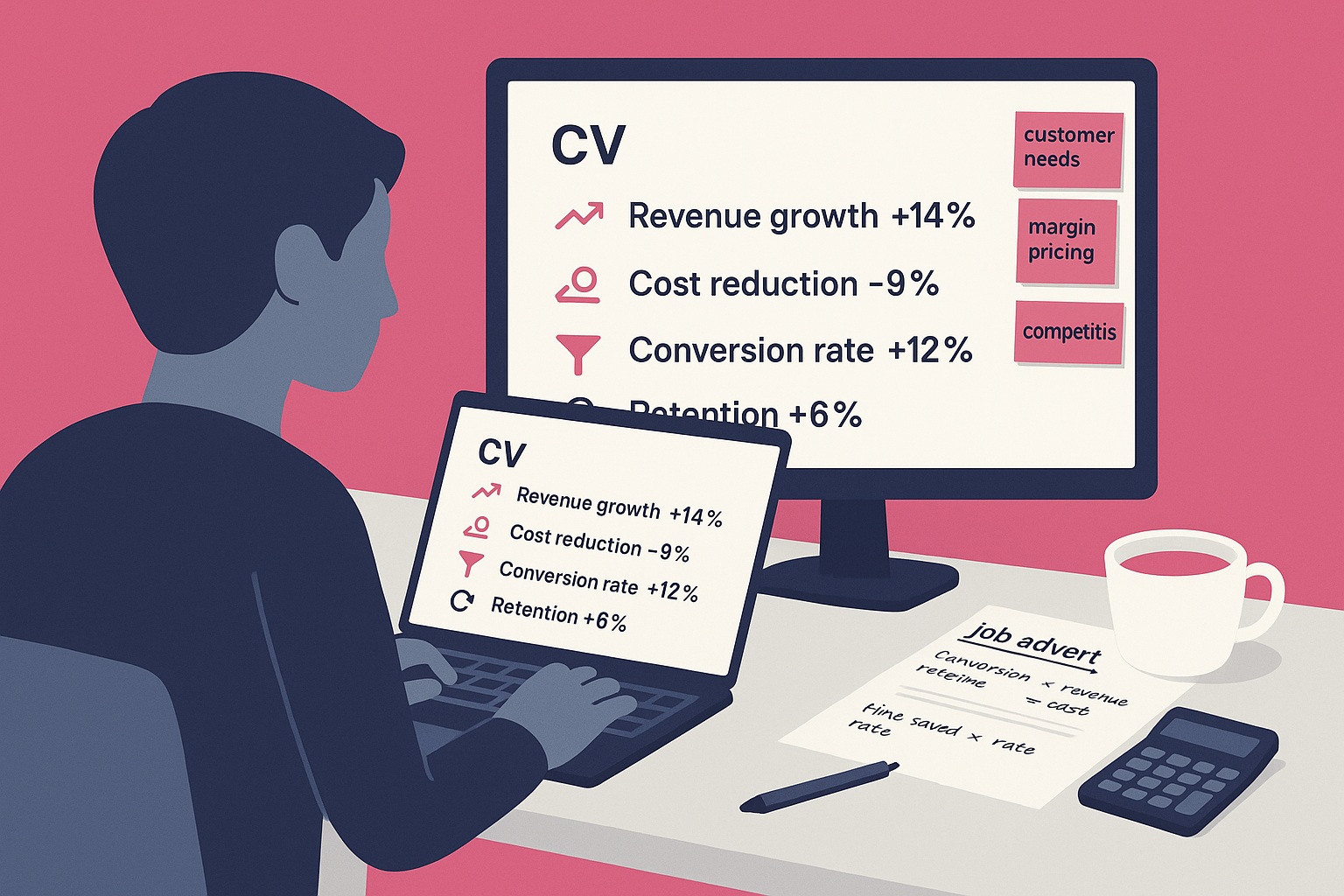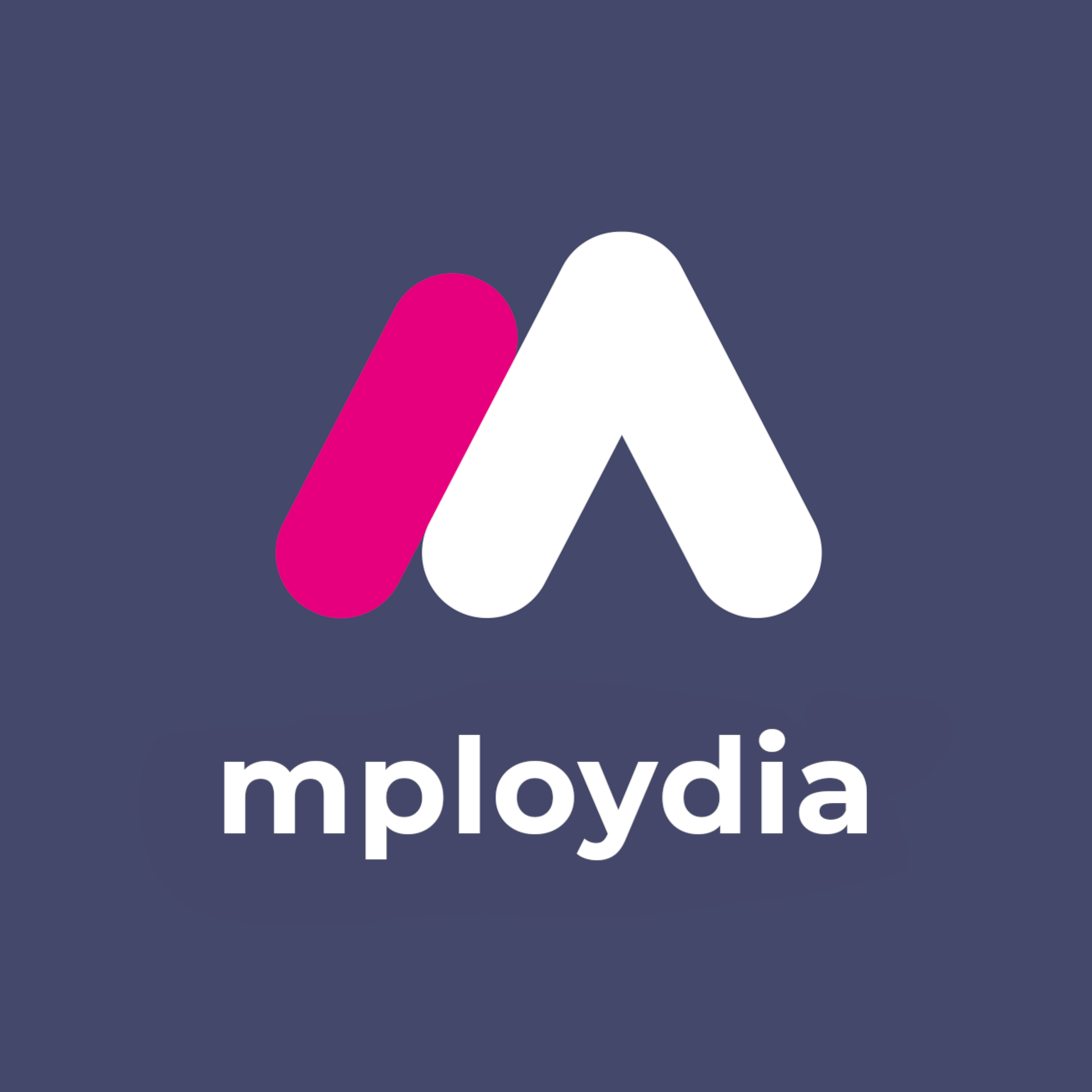
Demonstrating Commercial Awareness on Your CV: Tips that Work
What commercial awareness actually means
Commercial awareness is knowing how an organisation makes money, what drives costs, what customers value, and how your actions change outcomes. It is applied business acumen. It is not just “understanding the industry.” It is the ability to make better day-to-day decisions because you know the commercial impact.
Why employers care and what they look for on a CV
Hiring managers want people who can spot opportunities, avoid waste, and protect margin. They look for:
- Outcomes tied to metrics such as revenue, margin, cost per unit, conversion, retention, utilisation, on-time delivery, and customer satisfaction
- Decisions that show trade-offs. Faster and cheaper without harming quality. Better experience without exploding cost
- Context that proves you understand the business model, audience, and competitive environment
- Evidence you can prioritise, simplify, and execute
How to evidence commercial awareness on your CV, section by section
Profile summary
A strong two-line summary beats a generic statement.
- Weak: “Business graduate seeking opportunity to grow skills.”
- Strong: “Business graduate with internship experience improving online conversion by 14% and cutting returns by 9% through customer insights and test-and-learn.”
Skills section
List commercial skills that match the role and industry.
- Commercial skills: market analysis, pricing, basic P&L understanding, unit economics, customer segmentation, funnel optimisation, forecasting, supplier negotiation, budget tracking, cost-benefit analysis, A/B testing, ROI estimation, demand planning, inventory control, KPI reporting, stakeholder management
Experience bullets
Each bullet should show action, context, and impact. Use numbers. If you lack direct revenue figures, use proxies.
- Action: what you did
- Context: for whom and why it mattered
- Impact: quantified outcome
Projects section
Add academic, volunteer, or personal projects that had measurable outcomes.
- “Built a pricing model in Excel for a student-run café, improving gross margin by 6% by adjusting portion sizes and supplier mix.”
Education
Include relevant modules and brief outcomes.
- “Operations Management. Ran a simulated factory, reduced cycle time by 18% while maintaining yield >98%.”
Certifications and training
Add proof that you understand commercial fundamentals.
- Google Analytics certification, Excel fundamentals, financial literacy microcredentials, negotiation short courses, HubSpot or Salesforce training, Power BI fundamentals
Extracurriculars
Show leadership with outcomes.
- “Sponsorship Lead, Student Society. Secured £4,200 in partner funding and reduced event costs 12% by renegotiating venue and printing.”
Quantify with numbers. What to measure and how to estimate
If you do not have full financial data, use operational and customer metrics.
High-signal metrics to include
- Growth: revenue, sign-ups, conversion rate, average order value, leads generated, show-up rate, adoption, feature usage
- Efficiency: cost per unit, processing time, cycle time, utilisation, wastage, returns, error rate, scrap, rework
- Customer: NPS, CSAT, repeat purchase rate, churn, retention, on-time delivery, first response time, resolution time, queue time
- Risk and quality: compliance rate, on-time audits, incident reduction, uptime, SLA adherence
Simple ways to estimate impact
- Conversion lift from A/B tests: measure before vs after click-through or sign-up rate
- Time saved: multiply minutes saved per task by frequency per week
- Cost saving proxy: time saved x loaded hourly rate estimate for that role
- Revenue proxy: uplift in average order value x number of orders in the period
- Retention improvement: percentage point change x average customer value over a period
State estimates as “approx.” and be ready to explain your method.
Phrases and bullet templates by role and industry
Sales and marketing
- Increased landing page conversion by 14% by simplifying form fields and clarifying value proposition, adding 260 incremental leads per month.
- Grew average order value by 8% through cross-sell bundles informed by purchase data.
- Cut cost per lead by 19% by reallocating spend from low-yield channels to SEO content targeting long-tail queries.
- Designed a three-email recovery flow, reducing basket abandonment by 11% and adding an estimated £3,500 monthly revenue.
Operations and supply chain
- Reduced pick-and-pack time by 21% by reorganising bin locations and standardising labelling, enabling 2 additional daily dispatch runs.
- Lowered supplier lead time volatility by 15% by setting reorder points and communicating forecast changes fortnightly.
- Saved ~£6,800 annually by switching to recyclable packaging sizes aligned with order profiles, cutting void-fill usage by 32%.
Finance, data, and analysis
- Built a weekly KPI dashboard in Excel that surfaced margin leakage by product line, enabling price adjustments that protected 2.1 percentage points of gross margin.
- Forecasted demand using 12-month moving averages, reducing stockouts by 23% in high-velocity SKUs.
- Identified 9% of invoices with duplicate risk through a simple rule-based audit, preventing ~£4,200 in overpayment.
Product and technology
- Prioritised backlog using impact vs effort scoring, delivering 3 features that lifted active users by 12%.
- Cut onboarding time by 27% by redesigning an in-app checklist based on friction logs and user interviews.
- Reduced cloud costs by ~£1,200 per quarter by right-sizing instances and scheduling non-production environments.
Customer service and retail
- Improved first contact resolution from 68% to 82% through a troubleshooting guide and targeted training, raising CSAT from 4.2 to 4.6.
- Reduced returns by 9% by advising customers on fit and care, supported by a quick sizing guide.
- Upsold accessories to 1 in 4 customers by asking diagnostic questions and matching needs, increasing revenue per transaction by £3.40.
Non-profit and public sector
- Increased grant success rate from 22% to 31% by aligning outcomes to funder priorities and adding measurable KPIs.
- Reduced programme delivery cost by 11% by coordinating volunteer rotas and consolidating venue bookings.
Healthcare and social care
- Cut missed appointments by 18% through SMS reminders and optimised slot allocation, freeing 9 clinical hours per week.
- Improved medication reconciliation accuracy to 98.5% by a two-check process, reducing adverse events risk.
Creative and media
- Lifted video completion rate by 23% by front-loading value and shortening intros to 3 seconds.
- Negotiated asset reuse to avoid £1,900 in stock photo costs across three campaigns.
For first-time jobseekers: where to find evidence if you lack office experience
Retail or hospitality shifts
- Trained 5 new staff, cutting average onboarding time from 10 to 7 shifts.
- Introduced a prep checklist that reduced waste by 15% on weekend shifts.
University projects
- Led a market entry analysis for a case business, identifying a £1.2m TAM niche and proposing a pricing ladder.
- Built a breakeven model for a pop-up event. Achieved profitability on day 2 by switching vendor mix.
Student societies
- Secured £4,200 in sponsorship by developing a tiered benefits pack and outreach plan.
- Doubled event attendance by partnering with 3 societies and running a referral challenge.
Volunteering
- Streamlined donation sorting with a colour code, increasing throughput by 35%.
- Created a simple CRM spreadsheet for follow-ups, lifting repeat donors by 12%.
Side hustles and freelancing
- Grew tutoring clients from 3 to 11 in 10 weeks via a referral incentive. Maintained 4.9-star reviews.
- Designed logos for 7 small businesses, upselling brand kits to 3, adding £540 in incremental revenue.
Sports and clubs
- Implemented booking slots for equipment, reducing queues by 40% and increasing session utilisation.
Part-time admin or temp roles
- Cleaned 2,400-record spreadsheet, fixing duplicates and validation, improving mailing accuracy to 99%.
How to tailor commercial awareness to the job advert and ATS
Step-by-step process
- Mine the job advert. Highlight commercial terms such as revenue growth, cost reduction, retention, margin, pipeline, churn, utilisation, NPS, SLA, safety, compliance, throughput.
- Mirror the keywords naturally in your bullets and skills. Use the exact terms if accurate.
- Prioritise the top three outcomes the role exists to deliver. Make sure your top bullets speak to them.
- Align your numbers to the funnel stage the role targets. Top-of-funnel uses impressions, CTR, leads. Mid-funnel uses conversion, AOV. Post-purchase uses retention, NPS, lifetime value.
- Prove you can ramp fast. Add a line that shows quick time-to-value.
Example: “Delivered first conversion lift in week 3 by fixing tracking and copy.”
CV formatting for clarity and impact
- Use a clean, ATS-friendly layout. One font. Clear headings. No text boxes that ATS cannot parse.
- Put outcomes first. Bullet starts with the impact or metric.
- Keep bullets tight. 1 to 2 lines each. 4 to 6 bullets per role.
- Place the strongest bullets at the top of each section.
- Use consistent formatting for numbers. 12%, £3,500, 1.2x.
Before-and-after bullet transformations
- Before: “Helped with social media.” After: “Increased Instagram reach by 38% and drove 230 email sign-ups by launching a weekly value series and optimising timing.”
- Before: “Worked the till.” After: “Processed 70+ transactions per shift with <1% error and consistently sold add-ons to 1 in 4 customers.”
- Before: “Supported inventory.” After: “Reduced stock discrepancies by 62% by introducing daily cycle counts and variance logs.”
- Before: “Assisted with events.” After: “Cut event setup time by 30% through a standard checklist and vendor arrival windows.”
- Before: “Did research.” After: “Identified 3 high-margin niches with projected £90k potential using competitor price tracking and keyword data.”
Commercial awareness phrases you can copy and adapt
- Protected margin by…
- Converted demand into revenue by…
- Lowered cost-to-serve by…
- Improved unit economics by…
- Increased customer lifetime value by…
- Reduced churn by…
- Shortened time-to-value by…
- De-risked delivery by…
- Improved forecast accuracy by…
- Optimised channel mix by…
Industry context to signal awareness
Show you know the drivers that matter in the specific industry.
- E-commerce: conversion rate, AOV, returns, fulfilment cost, CAC, LTV, repeat purchase, last-mile delivery
- SaaS: activation, adoption, retention, expansion revenue, churn, gross margin, support cost per ticket
- Retail: footfall, conversion, basket size, shrinkage, staff scheduling, replenishment accuracy
- Manufacturing: throughput, yield, downtime, OEE, scrap, cycle time, supplier lead times
- Healthcare: capacity, no-shows, safety incidents, care outcomes, turnaround, compliance
- Non-profit: cost per impact, grant success rate, restricted vs unrestricted funds, volunteer hours
How to show competitor and market awareness without waffling
Do not pad your CV with “industry passionate” lines. Instead, show action.
- Benchmarked 4 competitors’ pricing and feature sets to position a starter plan, increasing trials by 17%.
- Used keyword data to identify underserved queries, creating 6 pages that now drive 2,100 monthly visits.
- Surveyed 120 customers. Found service delays as top churn driver. Redesigned handover, reducing wait time by 41%.
Ethics and sustainability as commercial realities
Employers care about compliance, safety, and sustainability because penalties and brand risk are real.
- Cut single-use plastic by 60% and reduced disposal costs by £1,100 per year.
- Achieved zero lost-time incidents for 9 months by instituting a pre-shift safety check.
- Met GDPR requirements by standardising consent capture, reducing legal risk.
Language and formatting to stay credible
- Avoid buzzword soup. Replace “synergy, dynamic, results-oriented” with clear actions and numbers.
- Keep tense consistent. Past roles in past tense. Current role in present tense.
- Keep claims defensible. Be ready to explain the context, method, and maths.
- Use British spelling throughout.
Common mistakes to avoid
- Vague responsibilities. “Responsible for growth.” No metric. No outcome.
- Vanity metrics with no business tie. “10k views” with no lead or conversion link.
- Listing tools without outcomes. Tools are not results.
- Hiding achievements in paragraphs. Use bullets.
- Overclaiming ownership. If you contributed, say “contributed to.” Credibility matters.
- Forgetting constraints. Mention speed or budget limits when relevant.
Fast checklist to upgrade your CV today
- Identify 5 to 7 commercial metrics relevant to your target role.
- Rebuild your top 8 bullets around outcomes and numbers.
- Add one short line in your profile proving time-to-value.
- Tailor keywords to the job advert. Mirror language accurately.
- Move the highest-impact results to the top of each section.
- Trim fluff. Every line must earn its place.
- Proofread for British spelling and consistent number formatting.
Example CV bullets you can adapt by seniority
Entry level or graduate
- Analysed 1,200 rows of sales data in Excel to find high-return bundles, trialed in-store, raising AOV by 6%.
- Introduced a FAQ card at checkout, reducing post-purchase queries by 22%.
- Coordinated a 3-society event with a £1,000 budget, delivering a 19% surplus.
Early career
- Owned email lifecycle tests that lifted reactivation by 13% in 8 weeks.
- Reduced invoice processing time from 9 to 5 minutes by templates and validation checks.
- Negotiated courier rates, saving ~£2,400 per quarter while keeping 48-hour delivery.
Career changer
- Transferred hospitality upselling to retail, increasing accessories attach rate by 15%.
- Built a simple Power BI board that flagged slow movers, enabling markdowns before season end.
Proof of learning speed and curiosity
- Self-taught basic SQL and surfaced a retention issue, prompting a win-back email that recovered 7% of at-risk users.
- Read annual reports of 3 competitors to benchmark cost structure and informed a supplier negotiation plan.
Final polish: layout and length
- One page for early careers. Two if you have deep, relevant experience.
- Use 10 to 12-point font, clear headings, and standard margins.
- Put experience above education once you have any relevant work.
- Save as PDF unless the application demands Word.
Bottom line
Commercial awareness is not a buzzword. It is a habit of thinking and a way of working. Show that you understand how the business wins, and prove you can move the numbers that matter. If you do that on your CV, you will get noticed, interviewed, and hired because you look like someone who delivers value fast.
Next Steps
Want to learn more? Check out these articles:
Turning Career Gaps Into Employer Value [Practical Guide]
Take control of your digital footprint when job hunting
Securing Credible Referrals Without Prior Work Experience
Check out our Advanced Employability Course for all the help you need to get your dream job, fast.


